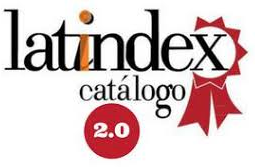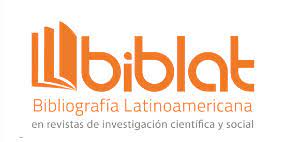Cloud services and attitudes to Information Technology in university students in the context of confinement
DOI:
https://doi.org/10.17162/au.v13i1.1320Keywords:
Education, information technologies, COVID-19, distance learning, cloud storage.Abstract
In 2021, the second year of confinement due to the pandemic caused by SARS-CoV-2 and its variants, public universities continued with virtual classes. In this case, the technology sector requires professionals who are capable of performing competently in the workplace; therefore, it is important to apply efficient teaching methods on information technologies in the training of students. In light of this, the research was developed within a quantitative approach with a pre-experimental design and proposes to determine the relationship between cloud services and attitudes to information technologies in students of the Professional School of Electronics and Telecommunications of the National University of Education (UNE). Information is collected from 68 students, students from the first academic cycles are excluded. The results show that the efficient use of cloud services has a significant impact on attitudes towards information technologies.Downloads
References
Aarón, M. A., & Bautista, E. F. (2021). Impact of the time variable on in-class use of information and communication technologies (ICT) by professors: the case of the University of La Guajira, Colombia. Formacion Universitaria, 14 (6), 135–148. https://doi.org/10.4067/S0718-50062021000600135
Albitres, J., Salinas, L., Herrera, H., Bazan, R., & Agüero, J. (2021). Actitud hacia el uso de las Tecnologías de la Información y la Comunicación para la enseñanza en docentes universitarios en el contexto de la COVID-19. Revista Innova Educación, 3 (2), 424–437. https://doi.org/10.35622/j.rie.2021.02.009
Aparicio, A., & Bazán, J. (2006). Las Actitudes hacia la Matemática- Estadística dentro de un modelo de aprendizaje. Revista Semestral del Departamento de Educación, 15 (28). https://revistas.pucp.edu.pe/index.php/educacion/article/view/2041/1974
Arancibia, M. L., Cabero, J., & Marín, V. (2020). Beliefs on teaching and the use of information and communication technologies (ICT) by higher education professors. Formacion Universitaria, 13 (3), 89–100. https://doi.org/10.4067/S0718-50062020000300089
Araya-Ramírez, J. (2014). El uso de la secuencia didáctica en la Educación Superior. Revista Educación, 38, 69–84. https://www.redalyc.org/pdf/440/44030587004.pdf
Blanco, M. A., Blanco, M. E., & Vila Hinojo, B. (2022). Educación ambiental y actitud frente al cambio climático en estudiantes universitarios. Revista San Gregorio, 1–15. https://doi.org/10.36097/rsan.v0i49.1924
Bosquez, V., Sanz, C., Baldassarri, S., Valencia, G., & Barragan, R. (2018). La computación afectiva: emociones, tecnologías y su relación con la educación virtual. 5. https://talentos.ueb.edu.ec/index.php/talentos/article/view/35
Bozkurt, A., & Sharma, R. (2020). Emergency remote teaching in a time of global crisis due to CoronaVirus pandemic. Asian Journal of Distance Education, 15. https://doi.org/10.5281/zenodo.3778083
Cabral, B. (2018). Consideraciones para el almacenamiento de archivos digitales en la nube informática en bibliotecas universitarias. Investigacion Bibliotecologica, 32 (74), 55–75. https://doi.org/10.22201/iibi.24488321xe.2018.74.57909
Chambi, E. (2021). Attitudes of students from a public university about the application of the flipped learning. Revista Electronica Educare, 25 (3). https://doi.org/10.15359/ree.25-3.5
De la Iglesia, J. C. F., Fernández, M. C., Cebreiro, B., Soto, J., Martínez, A. E., & Casal, L. (2020). Competences and attitudes for the use of ICT in Galician students of the degree of teaching. Publicaciones de La Facultad de Educacion y Humanidades Del Campus de Melilla, 50 (1), 103–120. https://doi.org/10.30827/PUBLICACIONES.V50I1.11526
De Moraes, L. B., Parpinelli, R. S., & Fiorese, A. (2022). Application of deterministic, stochastic, and hybrid methods for cloud provider selection. Journal of Cloud Computing, 11 (1). https://doi.org/10.1186/s13677-021-00275-1
Ferreira, H. J., Miotto, K., Pereira, J. C., Lopes, J., Gontijo, K. Q., Pereira, C. C., Klehm, R. B., & Santos, W. E. F. (2021). What about physical education? Narratives of teacher-researchers about remote classes in federal institutes. Movimento, 27. https://doi.org/10.22456/1982-8918.117478
Hermitaño, B. C., & Delgado, R. (2022). Factores que afectan la participación activa de estudiantes universitarios en clases remotas en el contexto de la pandemia COVID-19: El caso de la UNE. Apuntes Universitarios, 12 (3), 465–479. https://doi.org/10.17162/au.v12i3.1142
Hernandez, N. L., & Florez, A. S. (2014). Computación en la nube. Revista Mundo FESC, 46–51. https://doi.org/https://dialnet.unirioja.es/descarga/articulo/5109245.pdf
Huamán, L., Torres, L. A., Amancio, A. M., & Sánchez, S. (2021). Educación remota y desempeño docente en las instituciones educativas de Huancavelica en tiempos de COVID-19. Apuntes Universitarios, 11 (3), 45–59. https://doi.org/10.17162/au.v11i3.692
itUser. (2022, March 24). Siete de cada diez empresas acusan la falta de profesionales en el entorno cloud. https://www.ituser.es/cloud/2022/03/siete-de-cada-diez-empresas-acusan-la-falta-de-profesionales-en-el-entorno-cloud
Khozaei, S. A., Zare, N. V., Moneghi, H. K., Sadeghi, T., & Taraghdar, M. M. (2022). Effects of quantum-learning and conventional teaching methods on learning achievement, motivation to learn, and retention among nursing students during critical care nursing education. Smart Learning Environments, 9 (1). https://doi.org/10.1186/s40561-022-00198-7
Krivova, A. L., Kurbakova, S. N., Afanasyev, V. V., & Rezakov, R. G. (2020). Capabilities of cloud services and webinars effectiveness of teaching humanities students. Utopia y Praxis Latinoamericana, 25 (5), 135–146. https://doi.org/10.5281/zenodo.3984218
Moreno, G. C., & Delgado, S. C. (2013). Evaluación de la competencia digital y las actitudes hacia las tic del alumnado universitario. Revista de Investigacion Educativa, 31 (2), 517–536. https://doi.org/10.6018/rie.31.2.169271
Najm, Y. A., Alsamaraee, S., & Jalal, A. A. (2022). Cloud computing security for e-learning during COVID-19 pandemic. Indonesian Journal of Electrical Engineering and Computer Science, 27 (3), 1610–1618. https://doi.org/10.11591/ijeecs.v27.i3.pp1610-1618
Olvera, M. D., & Benítez, B. (2008). User attitudes and perceptions toward information technology. Profesional de La Informacion, 17 (2), 199–204. https://doi.org/10.3145/epi.2008.mar.10
Peralta, M., Salgado, C., Montejano, G., & Riesco, D. (2016). Las Redes Sociales y la Nube: Un nuevo Paradigma para los Procesos de Negocio. RISTI - Revista Iberica de Sistemas e Tecnologias de Informacao, 18, 66–82. https://doi.org/10.17013/risti.18.66-82
Ramirez, E., Cañedo, I., Orgaz, B., & Martín, J. (2021). Evaluar competencias digitales en Educación Infantil desde las prácticas de aula. Pixel-Bit Revista de Medios y Educación, 37–69. https://doi.org/10.12795/pixelbit.85580
Red Hat. (2019). ¿Qué son los servicios de nube? ¿Qué Son Los Servicios de Nube? https://www.redhat.com/es/topics/cloud-computing/what-are-cloud-services
Regalado, M., Medina, A., Chumpitaz, M., & Ponce B. (2022). Profesionales de la primera línea: desafíos en su formación universitaria. Atención Primaria Práctica, 4 (2). Primaria Práctica, 4(2). https://doi.org/10.1016/j.appr.2022.100132
Rodriguez, M. (2007). El uso del tiempo en la práctica pedagógica de las escuelas adscritas a la Alcaldía Metropolitana. Sapiens. Revista Universitaria de Investigación, 2, 83–104. https://www.redalyc.org/pdf/410/41080206.pdf
Sánchez, A., Flores, I. C., Veytia, M. G., & Azuara, V. (2021). Techno-stress and addiction to information and communication technologies (ICT) in Mexican university students: instrument diagnosis and validation. Formación Universitaria, 14 (4), 123–132. https://doi.org/10.4067/S0718-50062021000400123
Sandoval, F. J., Yévenes, J. N., & Badilla, M. G. (2020). ACT-ED: instrumento unifactorial para medir la actitud hacia el uso educativo de TIC en docentes chilenos de educación secundaria. Revista de Estudios y Experiencias en Educación, 19 (41), 225–237. https://doi.org/10.21703/rexe.20201941sandoval12
Soy, D. (2020). Formación continuada a través de plataformas. Farmacia Hospitalaria : Organo Oficial de Expresion Cientifica de La Sociedad Espanola de Farmacia Hospitalaria, 44 (7), 71–73. https://doi.org/10.7399/fh.11488
Tacora, S., & García, I. (2018). La importancia de la escuela, el profesor y el trabajo educativo en la atención a la deserción escolar. VARONA, Revista Científico-Metodológica. http://scielo.sld.cu/pdf/vrcm/n66s1/1992-8238-vrcm-66-s1-e24.pdf
Tafur, R., & Izaguirre, M. H. (2014). Cómo hacer un proyecto de investigación (M. H. Izaguirre Sotomayor, Ed.; Primera Edición). 2014.
Varela, S. A. &Valenzuela, J. R. (2020). Use of information and communication technologies as a transversal competence in teacher training. Revista Electronica Educare, 24 (1). https://doi.org/10.15359/ree.24-1.10
Villarreal, H. O., Marín, W. J., & Angeles, J. C. (2021). It management model for peruvian universities applying cloud computing. Revista Venezolana de Gerencia, 26 (Special Issue 6), 665–679. https://doi.org/10.52080/rvgluz.26.e6.40
Wolff, J. K., Fossell, K. R., Harrold, M., Kavulich, M., & Gotway, J. H. (2021). Enhancing the Student Experience with Numerical Weather Prediction: Advantages of Integrating Container and Cloud Technologies into Course Curricula. Bulletin of the American Meteorological Society, 103 (2), E531–E535. https://doi.org/10.1175/bams-d-21-0248.1
Downloads
Published
How to Cite
Issue
Section
License
Copyright (c) 2022 Bianca Patricia Torres Chumbes, Eliezer Quispe Alcca, Bernardo Clímaco Hermitaño Atencio

This work is licensed under a Creative Commons Attribution 4.0 International License.
- The authors retain their copyright but assign to the journal the right of the first publication, with the work registered under the Creative Commons attribution license, which allows third parties to use the published information as long as they mention the authorship of the work and that it was first published in this journal.
- Authors may make other independent or additional contractual arrangements for non-exclusive distribution of the version of the article published in this journal (eg, include it in an institutional repository or publish it in a book) as long as it clearly indicates that the work was first published in this journal.
- Authors are encouraged and advised to publish their work on the Internet (for example, on institutional or personal pages) before and during the review and publication process, as it can lead to productive exchanges and a greater and faster dissemination of the published work (see The Effect of Open Access).










